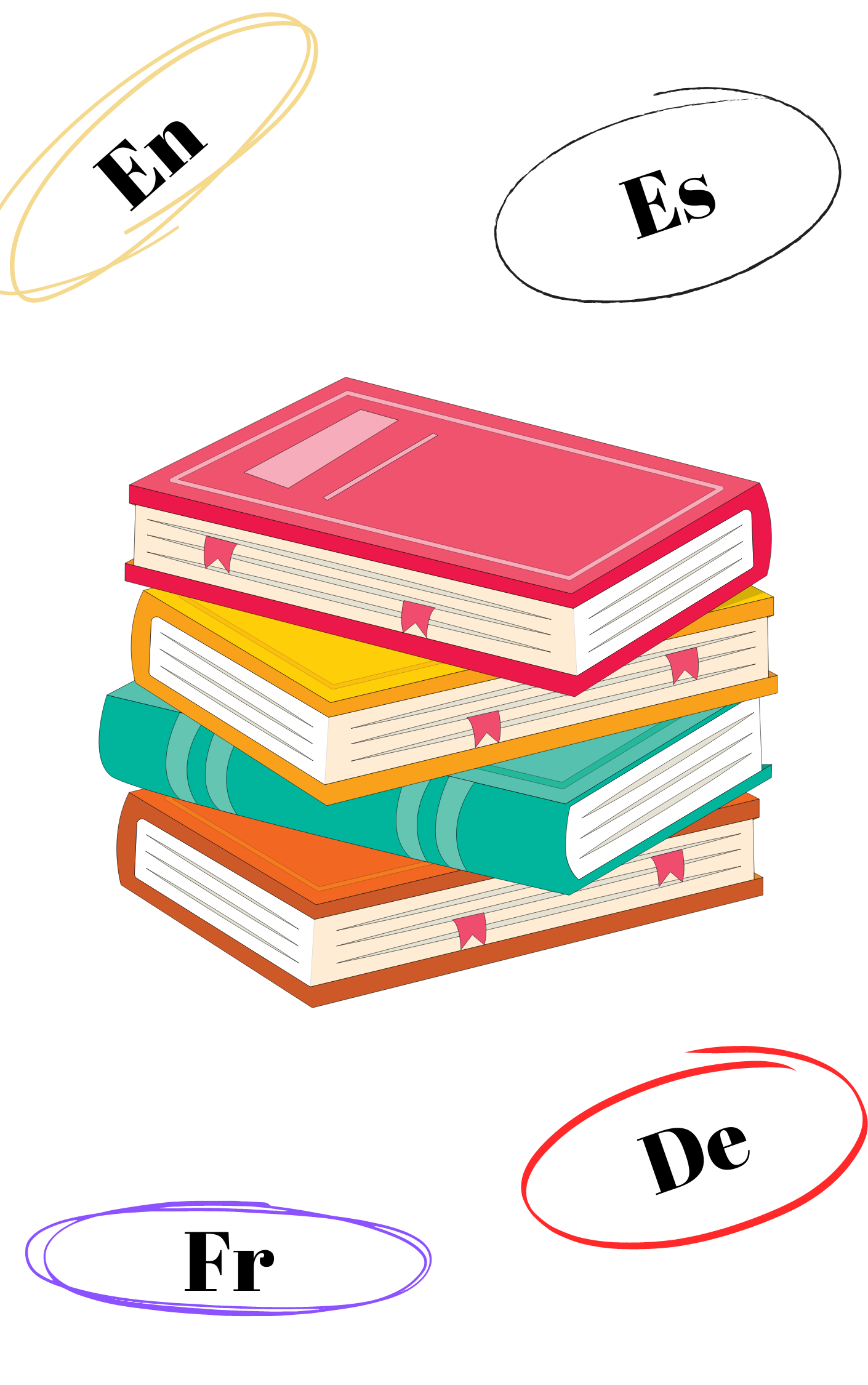Where to start learning Spanish? The general pronunciation rules (I)
question that one asks when starting to learn a foreign language is where to begin. Or at least, it’s a question I’ve asked myself and seen on the internet. So in this article, I’m going to share my personal experience and, in what relates to the Spanish language in particular, my opinion. It’s based on my experience as a language learner, as a native Spanish speaker, and as a Spanish as a foreign language teacher.
I started learning English when I was 8 or 9 years old. My parents made that decision, and today I’m very grateful for it. Only when I began learning German, many years later, did I realize something: understanding English pronunciation rules – if such rules even exist – is impossible. You have to learn each word and its pronunciation without attempting to draw comparisons to other words, no matter how similar they may seem. Sometimes, you can’t even compare letters within the same word. Just look at the pronunciation of the word Australia in English. However, in my first German class, my teacher taught me the pronunciation rules for the language in about 20 minutes. The only easy thing about German, in my opinion. And you know what? After that first class, I went home knowing how every word in German should be pronounced. That’s not the same as saying I could pronounce all the words in German at that moment. I still can’t, even though I’ve passed a C1 exam and use the language almost daily. After all, pronunciation is about executing quick and precise movements. It requires training. And when it comes to words like Rindfleischetikettierungsüberwachungsaufgabenübertragungsgesetz, no amount of training will suffice. But the point is that German is a language with clear pronunciation rules and no exceptions. If you learn the rules, you can read a text and pronounce every word correctly, even if you don’t understand a single one of them. Well, except for Rindfleischetikettierungsüberwachungsaufgabenübertragungsgesetz. And for me, at least, that’s motivating.
Why did I share this whole story? Because, unlike English and French (side note: French teachers teach you pronunciation rules only to tell you, almost every time you apply them, that there’s an exception for that particular word), Spanish is a language that, despite its many varieties – which are many and mainly involve changes in the place of articulation of consonants – has no exceptions when it comes to pronunciation. In other words, if you learn the pronunciation rules of the language, you will generally know how each word in Spanish should be pronounced. And I’ll say it again: Spanish is a pluricentric language; there are variations in pronunciation, but these aren’t exceptions – they are consistent features of each variety.
Sorry for the lengthy introduction. Everything above was to set the stage for what we’ll cover in these articles: the general pronunciation rules of the Spanish language, aiming to focus on the most neutral sounds. That way, just like what happened to me with German, you can feel motivated to read a text in Spanish knowing how to pronounce every word, even if you don’t understand what they mean. This also helps improve pronunciation. So, yes. Where should you start when learning Spanish? With pronunciation. I love phonetics, so I’ll continue publishing articles about the different varieties and specific aspects of Spanish, as you can read here, here, and here. But before diving into the particularities, I thought it would be interesting to write something about phonetics in general. And no, you won’t find words like Rindfleischetikettierungsüberwachungsaufgabenübertragungsgesetz in Spanish.
The current Spanish alphabet consists of 27 letters. Below, we’ll review the pronunciation of each one, along with a brief explanation, International Phonetic Alphabet (IPA) symbols, and an attempt to approximate the sounds to those of the other languages I write about in this blog.
A: This is an open, central vowel, which means the mouth is fully open when pronounced, and the tongue is in a low and central position within the oral cavity. Examples: amigo /aˈmi.ɣo/, casa /ˈka.sa/. English: There is no exact equivalent. The closest sound is found in words like father /ˈfɑːðər/ in American English, though it tends to be more posterior in English than in Spanish. German: Similar to the sound in words like Mann /man/ (man). It is an open /a/ very close to the Spanish one. French: Similar to the sound in words like papa /papa/ (papá). However, in French, the sound can be slightly more nasal depending on the context, but it is quite close.
B: In Spanish, the letter b is a voiced bilabial plosive /b/ when it appears at the beginning of a word or after a pause. In an intervocalic position or after a voiced consonant, it is pronounced as a voiced bilabial approximant [β]. Examples: /b/: bueno /ˈbwe.no/ [β]: saber /saˈβeɾ/ English: Similar to the /b/ sound in boat /boʊt/. However, in English, the /b/ tends to remain a plosive in all contexts, not an approximant. German: Resembles the /b/ sound in Baum /baʊm/ (árbol), where the /b/ is also a voiced bilabial plosive but more tense. French: Similar to the /b/ sound in beau /bo/ (bello). In French, the /b/ retains its plosive nature in all positions.
C: The pronunciation of c depends on the vowel that follows it and the region where it is spoken. Before the vowels a, o, and u: it is always pronounced as a voiceless velar plosive /k/. Examples: casa /ˈka.sa/, coche /ˈko.tʃe/, cuna /ˈku.na/. In Spain (except in some southern regions): it is pronounced as a voiceless dental fricative /θ/. Examples: cielo /ˈθje.lo/, cena /ˈθe.na/. In most of Latin America: it is pronounced as a voiceless alveolar fricative /s/. Examples: cielo /ˈsje.lo/, cena /ˈse.na/. English: If /k/: similar to the k sound in cat /kæt/. If /s/: similar to the s sound in sun /sʌn/. If /θ/: identical to the “th” sound in think /θɪŋk/. German: If /k/: similar to the k sound in Katze /ˈkat.sə/ (cat). If /s/: the same as the ß sound. No direct equivalent exists for the /θ/ sound of Peninsular Spanish. French: If /k/: similar to the k sound in car /kaʁ/. French: If /s/: similar to the sound in ciel /sjɛl/ (cielo). French does not have an equivalent sound to the /θ/ sound.
D: The pronunciation of d varies depending on its position in the word. /d/: Voiced dental plosive. This occurs at the beginning of a word, after a pause, or after a nasal or lateral consonant. Examples: dedo /ˈde.ðo/, andar /anˈdaɾ/. [ð]: Voiced interdental approximant. This occurs in intervocalic position or at the end of a word. Examples: nada /ˈna.ða/, verdad /beɾˈðað/. English: /d/: Similar to the d sound in dog /dɒg/. However, in English, the /d/ is usually alveolar, while in Spanish it is dental. [ð]: Similar to the “th” sound in this /ðɪs/. German: /d/: Similar to the sound in das /das/ (eso). German does not have an exact equivalent for the [ð] sound. French: /d/: Similar to the sound in dame /dam/ (dama). French also does not have an approximant [ð] sound.
E: The e in Spanish is a semi-open, front vowel, meaning the tongue is positioned towards the front of the mouth, slightly elevated, but not enough to close the mouth completely. The tip of the tongue touches the upper edge of the lower teeth, and the back of the tongue approximates the palate without interfering with the airflow. Examples: es /es/, tener /teˈneɾ/. English: Similar to the sound in say /seɪ/, but in English, this sound usually forms a diphthong, which does not occur in Spanish. The beginning of /seɪ/ approximates the Spanish /e/. German: Similar to the sound in lesen /ˈleːzən/ (leer), where the /e/ is clear and sustained, very close to the Spanish one. French: Similar to the sound in été /e.te/ (verano). French has several variants of e that can be challenging for Spanish speakers learning French. The only e in Spanish is more similar to the closed variant in French.
F: The f is a voiceless labiodental fricative consonant, meaning it is produced by rubbing the lower lip against the upper teeth, without vocal cord vibration. It is a constant and stable sound in Spanish, with no significant regional variations. Examples: fácil /ˈfa.sil/, familia /faˈmi.lja/. English: Identical to the sound of f in words like fish /fɪʃ/. German: Similar to the sound in Foto /ˈfoːto/ (photo), and to the sound of v in words like voll or Vogel . French: The same as the sound in femme /fam/ (mujer). The f in French is also a voiceless labiodental fricative.
G: The g has different pronunciations depending on the following vowel and its position in the word. /g/: Voiced velar plosive consonant. It is pronounced as /g/ at the beginning of a word or after a pause, and after a nasal or lateral consonant. Example: gato /ˈga.to/. [ɣ]: Voiced velar approximant consonant. In intervocalic position or other contexts, it is pronounced as [ɣ], a softer sound. Example: amigo /aˈmi.ɣo/. /x/: Voiceless velar fricative consonant. Before the vowels e and i, the g is pronounced as /x/, similar to the j in Spanish. Example: gente /ˈxen.te/, gigante /xiˈɣan.te/. English: /g/: Similar to the g in go /ɡoʊ/. However, in English, the g is always plosive. [ɣ]: There is no exact equivalent in English. /x/: English lacks an identical sound, but it can approximate the “ch” sound in loch (in Scottish). German: /g/: Similar to the sound in Garten /ˈɡaʁ.tən/ (jardín). /x/: Very similar to the sound in Buch /buːx/ (libro), although German has more posterior variants. French: /g/: Similar to the sound in gare /ɡaʁ/ (estación). French does not have an equivalent for /x/.
H: In Spanish, the h is silent, meaning it does not represent a sound in most cases. It is not pronounced, although it influences the spelling of many words. Examples: hombre /ˈom.bɾe/ (man) huevo /ˈwe.βo/ (egg) Exceptions: In words of foreign origin or adapted expressions, the h can represent /h/ (an aspirated sound), especially in proper nouns or words borrowed from English, German, or other languages. Example: hámster /ˈham.steɾ/ Example: hobby /ˈho.βi/
I: The i in Spanish is a closed and front vowel, meaning the tongue is positioned near the hard palate at the front of the mouth, without closing it completely, and the tip of the tongue touches the lower teeth. Examples: isla /ˈis.la/ (island) camino /kaˈmi.no/ (road) English: Similar to the sound in machine /məˈʃiːn/. However, in English, the i often forms a diphthong, as in mine /maɪn/, which does not occur in Spanish. German: Similar to the sound in sie /ziː/ (ella), where the German i is also closed and front like the Spanish one. French: Very similar to the sound in si /si/ (si), where the vowel is also clear, closed, and stable.
J: The j in Spanish is pronounced as a voiceless velar fricative /x/. The intensity of the sound can vary depending on the region. In Spain, especially in the center and north, it is stronger and tenser, approaching the uvular sound [χ], while in Latin America, it tends to be softer and more relaxed, sometimes even resembling [h] in certain cases. Examples: jugar /xuˈɣaɾ/ (to play) trabajo /tɾaˈβa.xo/ (work) English: There is no exact equivalent. The Spanish j sound can approximate the aspirated [h] sound in words like hello /həˈloʊ/ in some English varieties, particularly when the j pronunciation comes from Caribbean countries. In its more neutral pronunciation, the tongue is closer to the velum of the palate. German: Similar to the sound of ch in Bach /bax/ (arroyo), though this German sound is sometimes more tense. French: No exact equivalent.
K: The k in Spanish is always a voiceless velar plosive /k/, just like the c before consonants, a, o, or u. There are few words in Spanish with this letter, and most of them are loanwords or adaptations. English: Similar to the k sound in words like kite /kaɪt/, though less aspirated. German: Similar to the k sound in Kind /kɪnt/ (niño), though less aspirated. French: Matches the k sound in words like kilogramme /ki.lo.ɡʁam/ (kilogramo).
L: The l in Spanish is a voiced alveolar lateral consonant /l/, which means the air flows through the sides of the tongue while the tip touches the alveolar ridge (just behind the upper teeth). It is a clear and stable sound in Spanish, with no significant regional variations in its standard pronunciation. Examples: luz /lus/ (light) hola /ˈo.la/ (hello) English: Similar to the clear l sound in words like light /laɪt/ at the beginning of the word, although the articulation point in English is more dental. Additionally, in English, the l tends to become “dark” or velarized at the end of words like ball /bɔːl/, which does not happen in Spanish. German: Similar to the l in Lampe /ˈlam.pə/ (lámpara), which is also a clear alveolar lateral. French: Matches the l in lumière /lyˈmjɛʁ/ (luz), although French may slightly soften the sound depending on the context.
M: The m in Spanish is a voiced bilabial nasal consonant /m/, which means it is produced by bringing the lips together and allowing the air to flow through the nose, while the vocal cords vibrate. It is a constant sound with no significant variations in its standard pronunciation across the Spanish-speaking world. Examples: mano /ˈma.no/ (hand) amor /aˈmoɾ/ (love) English: Identical to the sound of m in words like mother /ˈmʌð.ɚ/. German: Similar to the sound in Mann /man/ (hombre). French: Matches the sound in maison /mɛ.zɔ̃/ (casa).
In the next article, we will complete the alphabet. But since we’re talking about pronunciation, here’s a tip. To improve pronunciation, listening to music is a very good idea. But do it attentively, with the goal of improving pronunciation. One thing I do, which has given me great results, is create a playlist in a target language, and read the lyrics of the songs the first few times I listen to them, to understand what the song says. Then, I listen to that playlist every time I want to hear music, and I sing along. I’m not sure if it’s a very pleasant experience for the people around me, but it has worked wonders for me in improving my pronunciation in my target languages, as listening to and pronouncing the same words repeatedly becomes something habitual, and you get used to the sounds. Thanks for reading!





Leave a Reply